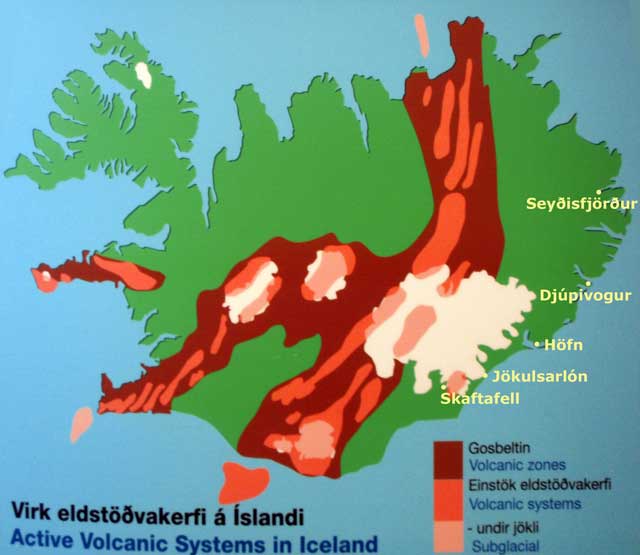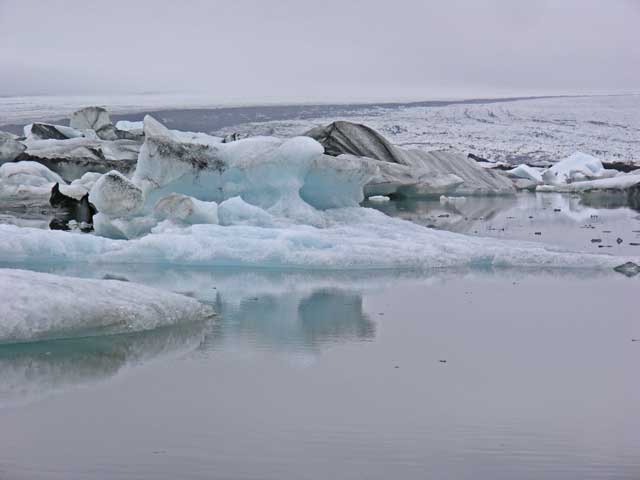
The lagoon filled with icebergs - from dark and dirty gray to cool blue.

On Friday morning, we boarded the bus under an overcast sky. About 45 minutes up the road was Jökulsarlón, a lagoon scooped out by a glacier that once reached the sea. The glacier was still much in evidence on the landward side of the lagoon, but its retreat from the ocean allows seawater to enter the body of water making the water brackish. In addition, the glacier calves icebergs into the lagoon, however they are trapped there until they melt to a size that allows them to pass through the river channel to the ocean – a journey of less than one tenth of a mile. While the saltwater mixture in the lagoon will melt ice faster than freshwater, the compressed glacial ice melts slower. The tour concession at the lagoon features amphibious craft that took us out into the lagoon among the blue tinted icebergs. While out there, a pair of zodiacs would push icebergs out of the path of our craft, and brought a small (about 10 lb) chunk of ice to the boat where our tour guide, Helga, discussed the finer points of ice, water, and glaciation.
The ring road continued along the coast, by farms nestled against the south facing cliffs. We reached Höfn in time for a brief walk (very useful for easing stiff legs and joints) along the waterfront to a monument. From there we walked road back into town, which much have gone through a nesting site for arctic terns. We were getting dive-bombed (although no one got hit by any “bombs”) with the creatures getting within 2 feet of our heads. Kristín recommended holding up one hand above your head to persuade them to keep their distance – which seemed to work. I tested the practice by waiting until a bird started its dive, then raising my hands to warn the tern alter or break off its dive.
Back into town, we ate lunch at a restaurant specializing in langoustines. These lobster-relatives are the characteristic harvest of the local fisherman. Only the tails are served, and each of us got a plate of about a dozen pieces of grilled deliciousness (each piece was a tail cut in half lengthwise). The meat is similar to lobster and shrimp and it was totally fresh. The meal was complemented by a salad with a simple balsamic vinaigrette. Simply wonderful!!
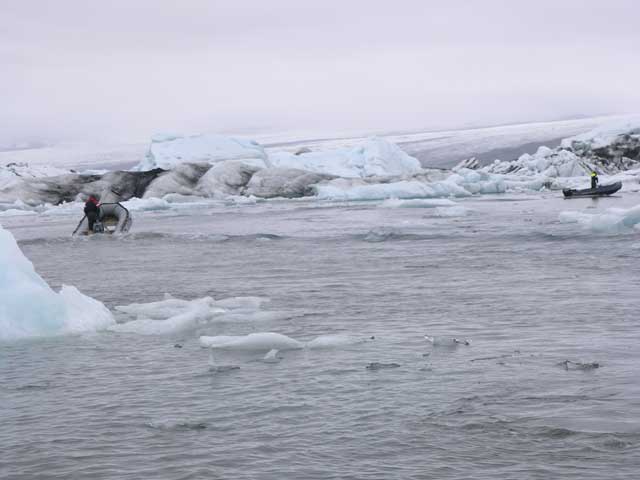
These zodiacs preceded us through the icebergs to push the icebergs away to open a channel for our craft.
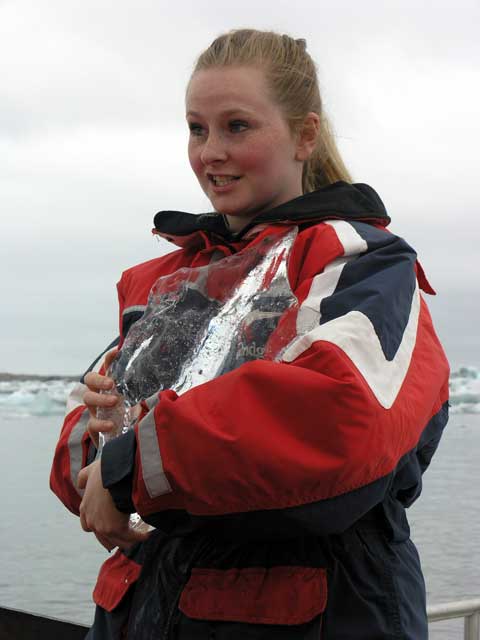
Helga, the boat guide holding a remarkably clear piece of iceberg, which we eventually tasted a chip.
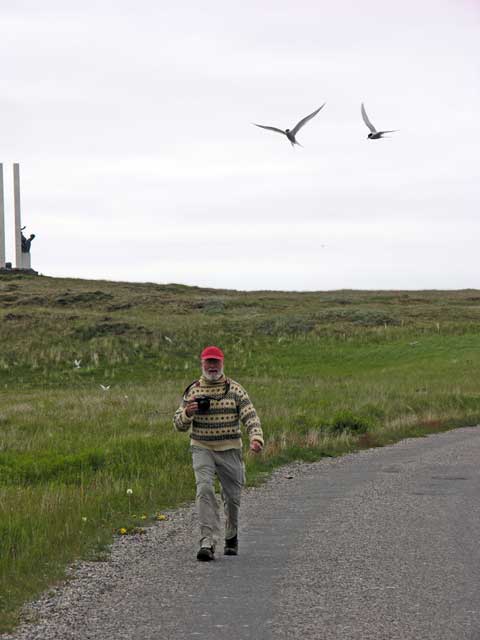
Two arctic terns registering their displeasure with Mr. Lubin's presence near their breeding grounds.
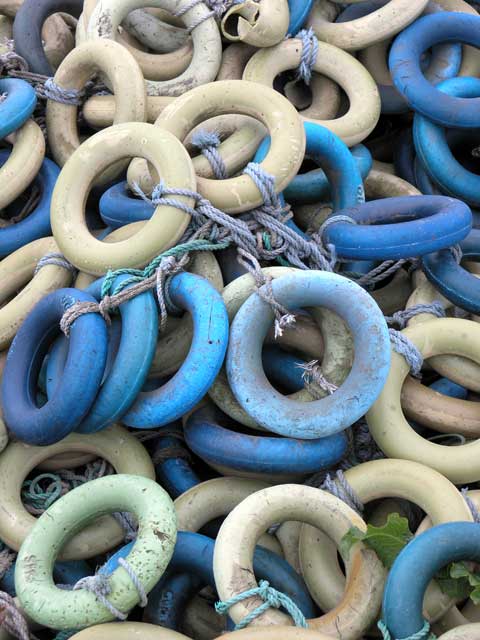
I couldn't quite figure out if these were floats or dock-side bumpers, or something else altogether.
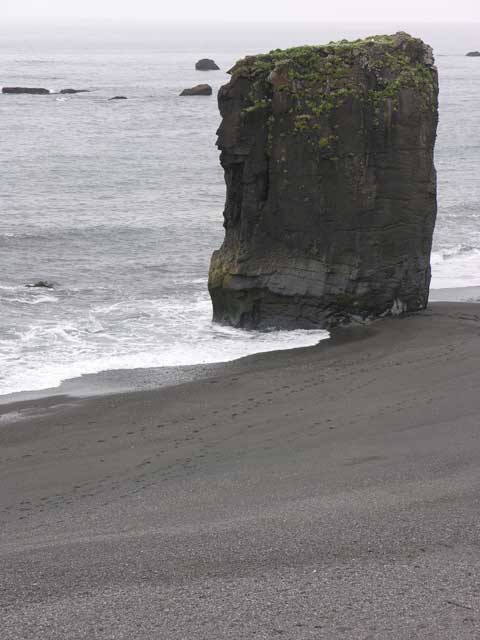
Stopping briefly along the coast near a solitary sea stack - complete with footprints (not ours) across the sand.
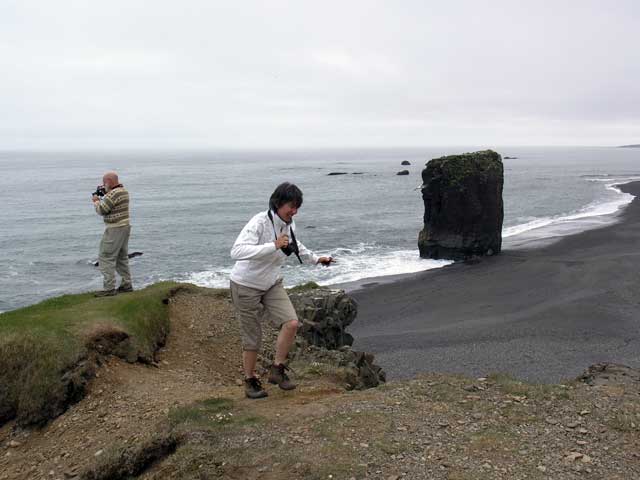
I think Diane's trying to get out of the picture, although it was my goal to get her in the picture.
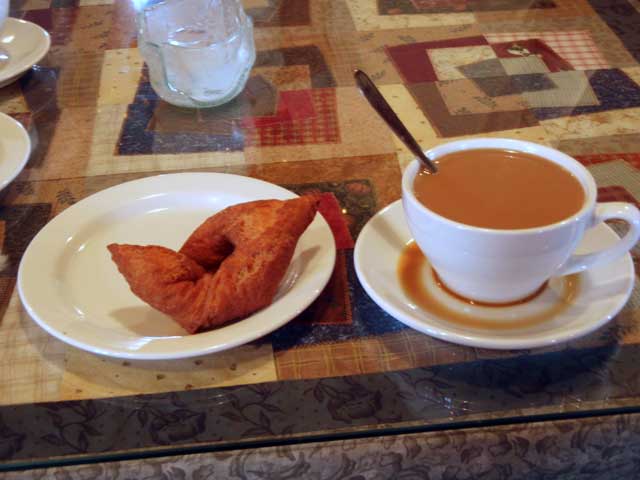
Kleina og kaffi. I dutifully dipped mine in the coffee, leaving oil droplets on the surface of the liquid.
The road from Höfn to Djúpivogur cuts through a mountain via a rough-hewn tunnel to continue northeastward along the coast. In Djúpivogur, we stopped for kleinur and kaffi – kleinur being a relative of the deep-fried cake doughnut. After browsing the adjacent museum, we were on the road again.
From Djúpivogur the road takes a northerly direction along the west side of Berulfjördur, and at the head of the fjord the road splits. On branch follows the east side of the fjord back to the coast, while the one we took drives up the valley inland.
The gravel road climbed steeply up the valley with numerous waterfalls spilling carelessly into the valley from the glacially scoured walls and rim. Hulda expertly navigated the bus and trailer up the rough road as it climbed into the low clouds. After reaching the top, we continued to drive through the mist for about 20 minutes or so, when we broke into bright sunlight. The road followed the river down into the valley beyond, taking a more gentle slope than the river which descended rapidly through gorges, disappearing deep into the shadow leaving nothing but mist to announce the presence of an unseen waterfall. The river widens as it approaches the lake Skiðuvatn. The valley continued to open and farms appeared as the road kept to the east wall of the valley, where the mountains above were patched with snow fields. The river flows further down the valley until it reaches the very long and narrow lake Lagerfljót. At the halfway point on the lake was the town of Egilsstaðir where we stopped for gas.
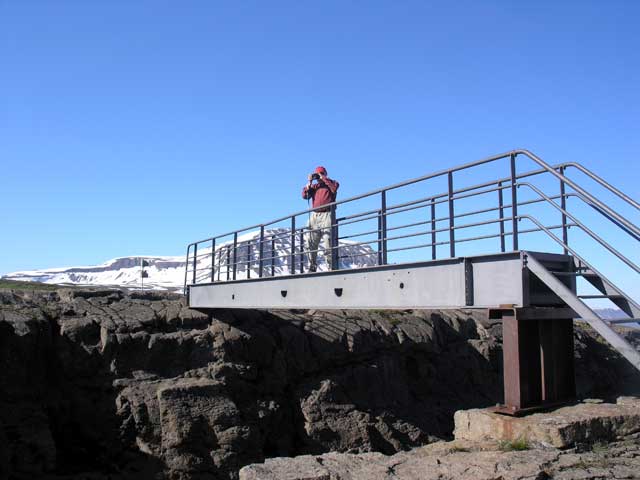
Jonathan on the bridge over the stream to the trail head - getting back across was more of a challenge.
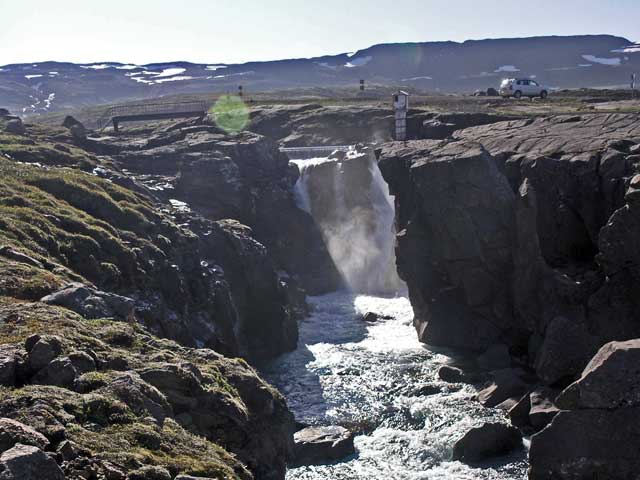
One of the many water falls - all the images of them suffer the same problem looking back into the sun.
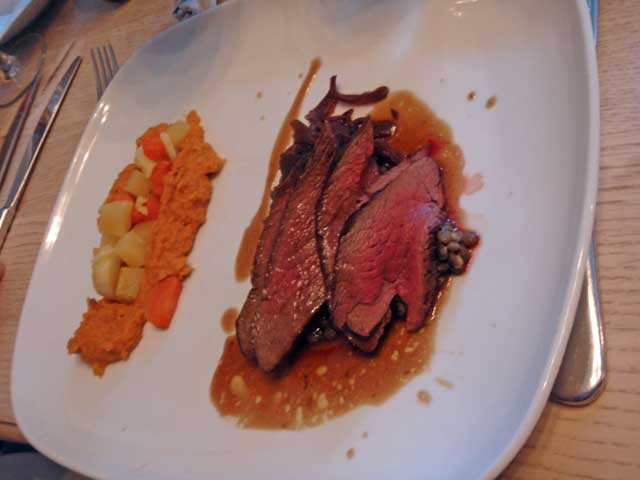
The reindeer eaten by everyone but me. The picture of my chicken was fuzzy, but it's preparation was spot-on.
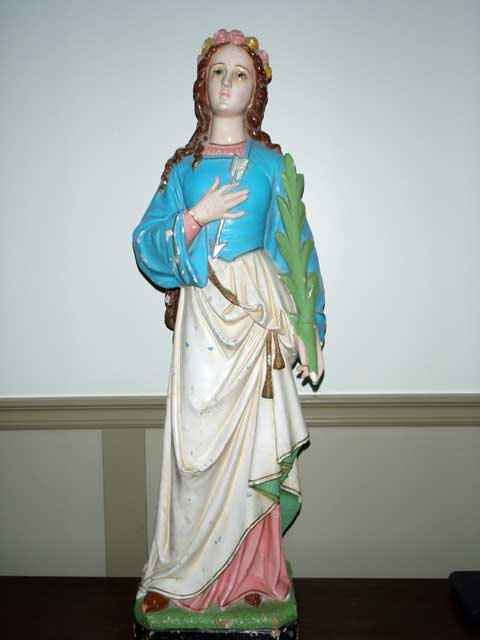
I'll have the check a hagiography to figure out who our patron saint was, with the arrow held to her bosom.
Turning east, the road zig-zagged up a mountainside covered with mosses and low growing plants and trees. [Old Icelandic joke – if you get lost in the forest in Iceland, just stand up.] Not long after crossing the highlands and beginning to descend into the fjord, we stopped to get off the bus and hike down into town alongside the river. Crossing a short sturdy metal bridge we began our descent on foot while Gisele, Jerye, and Kristín rode on down with Hulda and the bus.
Although there are trail markers on the way down, there is nothing resembling a path. We basically walked across the spongy moss and other low vegetation from one spectacular waterfall to the next. While the descent was hard on the knees, the sponginess of the moss was easy on the feet. I commented to Kristín the next day that the river was more waterfall than stream – there are a total of 24 falls over the 3 km / 2 miles of the river. The descent was extremely steep in a couple of places and I got rather friendly with a cliff face as we worked our way down on particularly steep and wet slope. There were numerous streams that we had to cross as they flowed down from the heights of layered lava to join the river.
Towards the end of the trail, Erling led us to a dam were we could re-cross the river sooner than the original plan of the bridge further downstream (it was approaching 1930, and dinner was at 2000). However there was a missing piece of walkway over a spillway that hadn’t been counted upon – the remains of that section was visible on the downstream bank. The gap was about three feet with not much more width to land upon after crossing (i.e. a running start and landing were no option). There was some mechanical apparatus spanning the spillway, and I hugged it tightly to secure myself as I stepped carefully across the gap. Hulda and the bus were waiting on the other side to take us the rest of the way into Seyðisfjörður.
The Hotel Aldan in town is one of several older structures that have been restored and converted into hotel rooms. The reception and restaurant are in one building and the others are scattered around the village. Our building was once a hotel that was converted into a bank, the back to a hotel. It’s really the most distinguished lodgings we’ve stayed in so far. Standing outside, you can hear the distant sound of the dozens of waterfalls that are visible from the town.
After grabbing a quick shower (the water pressure was a bit low as other walkers were apparently taking advantage of the facilities), we met in the dining room for dinner. A couple of days earlier, Kristín had polled us to see who would want to have reindeer for dinner. After my experience with venison in Ronda, Spain, I opted for the chicken. Turns out I was the only one, although the chicken was perfectly prepared.
